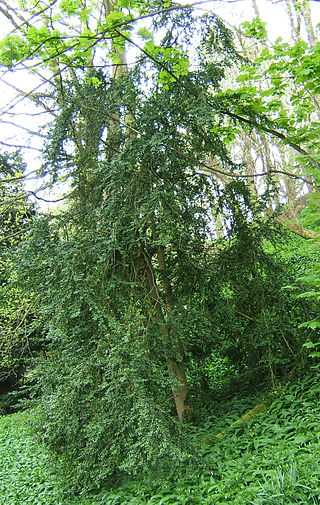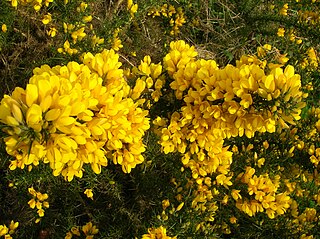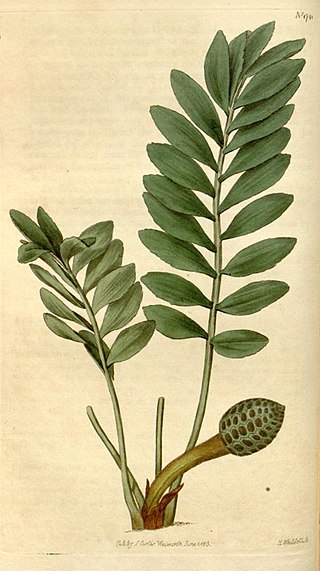
The Caribbean Sea is a sea of the Atlantic Ocean in the tropics of the Western Hemisphere. It is bounded by Mexico and Central America to the west and southwest, to the north by the Greater Antilles starting with Cuba, to the east by the Lesser Antilles, and to the south by the northern coast of South America. The Gulf of Mexico lies to the northwest.

Mahogany is a straight-grained, reddish-brown timber of three tropical hardwood species of the genus Swietenia, indigenous to the Americas and part of the pantropical chinaberry family, Meliaceae. Mahogany is used commercially for a wide variety of goods, due to its coloring and durable nature. It is naturally found within the Americas, but has also been imported to plantations across Asia and Oceania. The mahogany trade may have begun as early as the 16th century and flourished in the 17th and 18th centuries. In certain countries, mahogany is considered an invasive species.

Plantations are farms specializing in cash crops, usually mainly planting a single crop, with perhaps ancillary areas for vegetables for eating and so on. Plantations, centered on a plantation house, grow crops including cotton, cannabis, coffee, tea, cocoa, sugar cane, opium, sisal, oil seeds, oil palms, fruits, rubber trees and forest trees. Protectionist policies and natural comparative advantage have sometimes contributed to determining where plantations are located.

Buxus is a genus of about seventy species in the family Buxaceae. Common names include box or boxwood.

Ulex is a genus of flowering plants in the family Fabaceae. The genus comprises about 20 species of thorny evergreen shrubs in the subfamily Faboideae of the pea family Fabaceae. The species are native to parts of western Europe and northwest Africa, with the majority of species in Iberia.

The bee hummingbird, zunzuncito or Helena hummingbird is a species of hummingbird, native to the island of Cuba in the Caribbean. It is the smallest known bird. The bee hummingbird feeds on nectar of flowers and bugs found in Cuba.

Plumeria, also known as frangipani, is a genus of flowering plants in the subfamily Rauvolfioideae, of the family Apocynaceae. Most species are deciduous shrubs or small trees. The species are native to the Neotropical realm, but are often grown as cosmopolitan ornamentals in tropical regions, especially in Hawaii, as well as hot desert climates in the Arabian Peninsula with proper irrigation.

Capsicum chinense, commonly known as a "habanero-type pepper", is a species of chili pepper native to the Americas. C. chinense varieties are well known for their unique flavors and many have exceptional heat. The hottest peppers in the world are members of this species, with a Scoville Heat Unit score of 2.69 million measured in the C. chinense cultivar, Pepper X in 2023.

Alejandro de Humboldt National Park is a national park in the Cuban provinces of Holguín and Guantánamo. It is named after the German scientist Alexander von Humboldt who visited the island in 1800 and 1801. The park was inscribed as a UNESCO World Heritage Site in 2001 for its size, altitude range, complex lithology, landform diversity, and wealth of endemic flora and fauna.

Roystonea is a genus of eleven species of monoecious palms, native to the Neotropics, in the Caribbean, the adjacent coasts of Florida in the United States, Mexico, Central America and northern South America. Commonly known as the royal palms, the genus was named after Roy Stone, a U.S. Army engineer. It contains some of the most recognizable and commonly cultivated palms of tropical and subtropical regions.

Coccothrinax is a genus of palms in the family Arecaceae. There are more than 50 species described in the genus, plus many synonyms and subspecies. A new species was described as recently as 2017. Many Coccothrinax produce thatch. In Spanish-speaking countries, guano is a common name applied to Coccothrinax palms. The species are native throughout the Caribbean, the Bahamas, extreme southern Florida and southeastern Mexico, but most of the species are known only from Cuba.

Drosera intermedia, commonly known as the oblong-leaved sundew, spoonleaf sundew, or spatulate leaved sundew, is an insectivorous plant species belonging to the sundew genus. It is a temperate or tropical species native to Europe, southeastern Canada, the eastern half of the United States, Cuba, Hispaniola, and northern South America.

Phlaeothripidae is a family of thrips with hundreds of genera. They are the only extant family of the suborder Tubulifera, alongside the extinct family Rohrthripidae and are themselves ordered into two subfamilies, the Idolothripinae with 80 genera, and the Phlaeothripinae with almost 400. Some 3,400 species are recognised in this family, and many are fungivores living in the tropics.

The Zapata Swamp is located on the Zapata Peninsula in the southern Matanzas Province of Cuba, in the municipality of Ciénaga de Zapata. It is located less than 150 kilometres (93 mi) southeast of Havana.
Juniperus barbadensis, also known as West Indian juniper, is a species of conifer in the family Cupressaceae endemic to the West Indies.

The Cuban flower bat, also called Poey's flower bat, is a species of bat in the family Phyllostomidae. It is found on the Caribbean islands of Cuba and Hispaniola.

Zamia pygmaea is a species of plant in the family Zamiaceae found only in Cuba. It is the smallest living cycad. It is listed as critically endangered on the IUCN Red List based on its limited distribution, severely fragmented habitat, and population of less than 250 mature individuals.
The Caribbean bioregion is a biogeographic region that includes the islands of the Caribbean Sea and nearby Atlantic islands, which share a fauna, flora and mycobiota distinct from surrounding bioregions.

Roystonea regia, commonly known as the Cuban royal palm or Florida royal palm, is a species of palm native to Mexico, the Caribbean, Florida, and parts of Central America. A large and attractive palm, it has been planted throughout the tropics and subtropics as an ornamental tree. Although it is sometimes called R. elata, the conserved name R. regia is now the correct name for the species. The royal palm reaches heights from 15–24 m (50–80 ft) tall. Populations in Cuba and Florida were long seen as separate species, but are now considered a single species.















